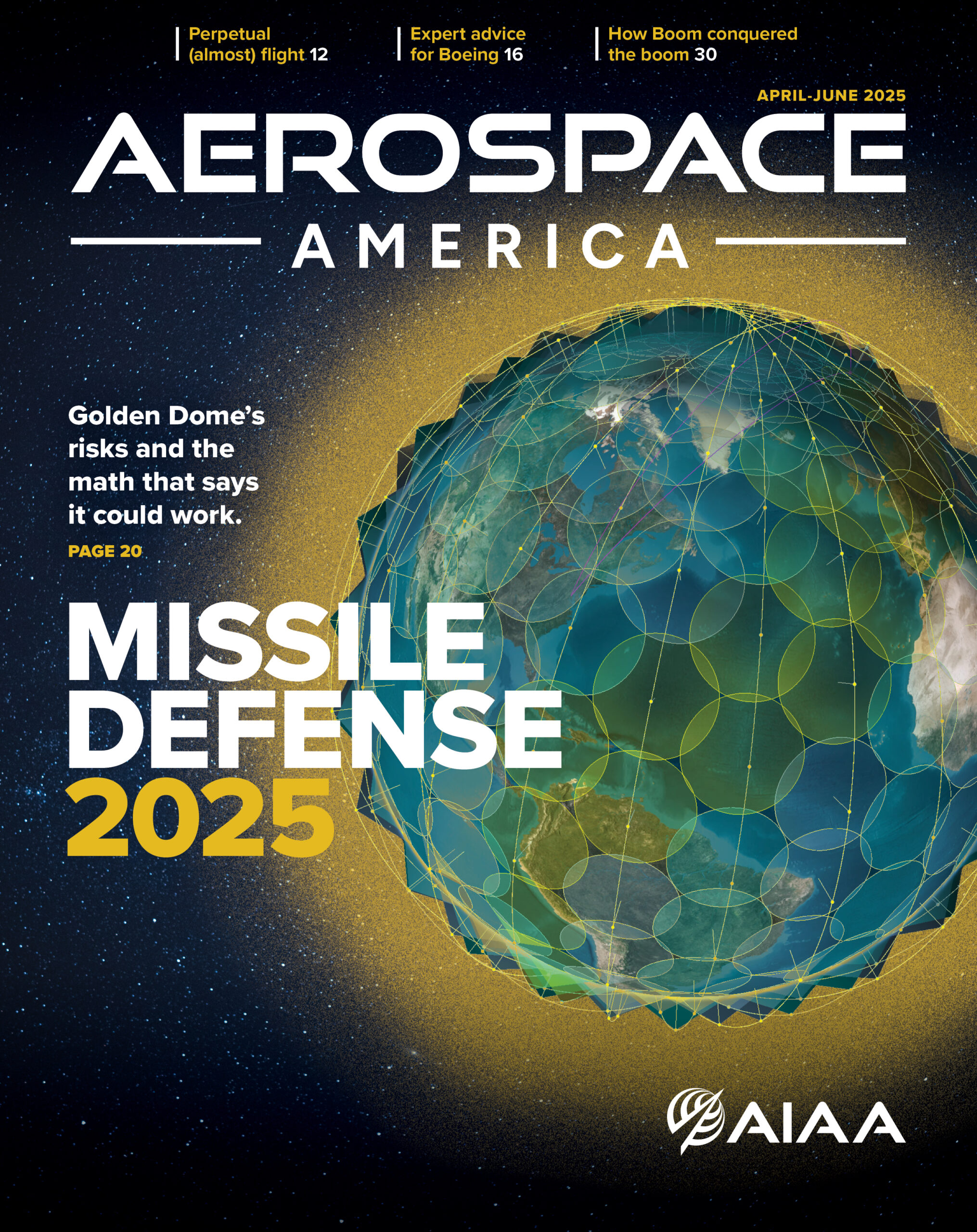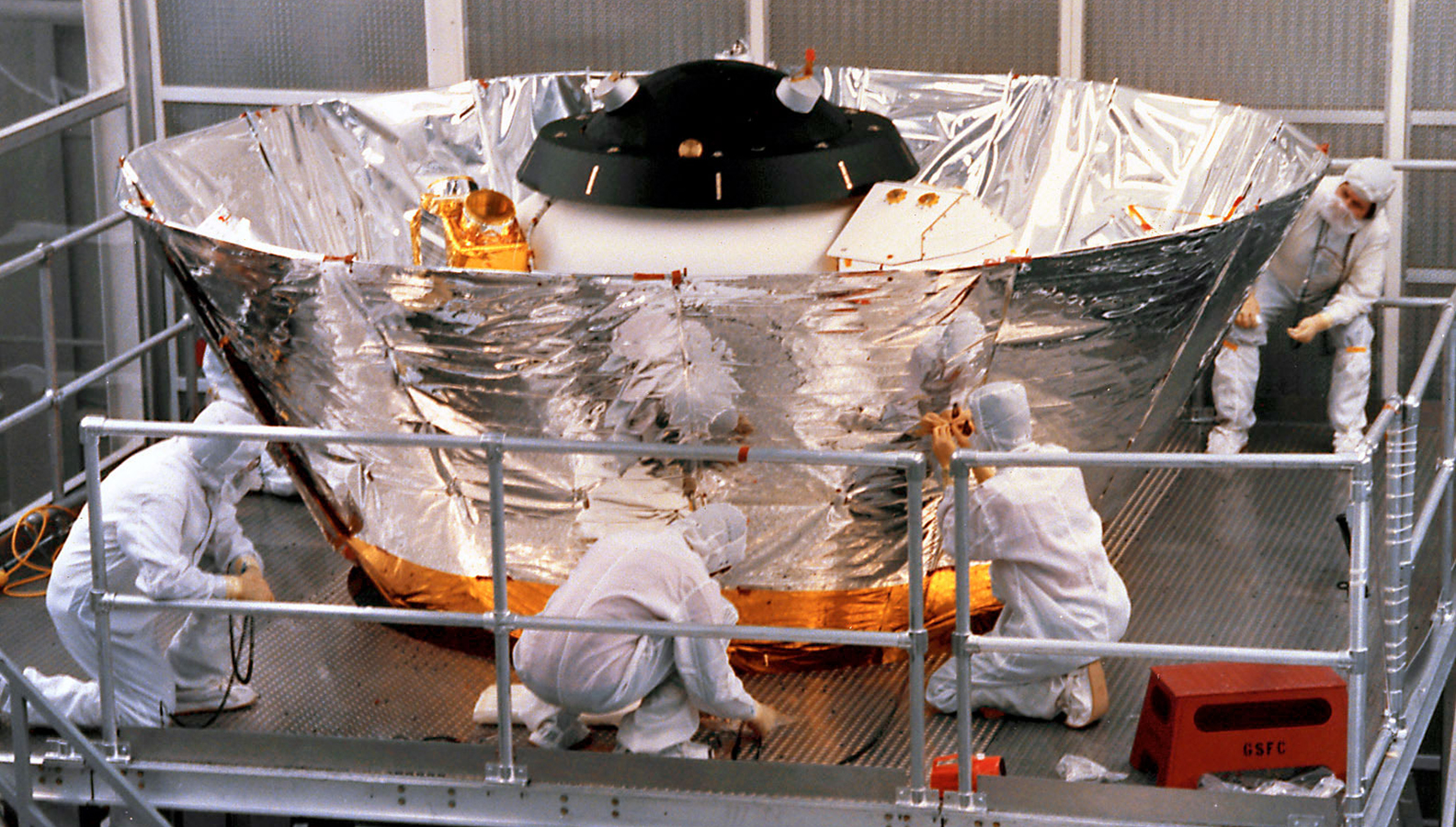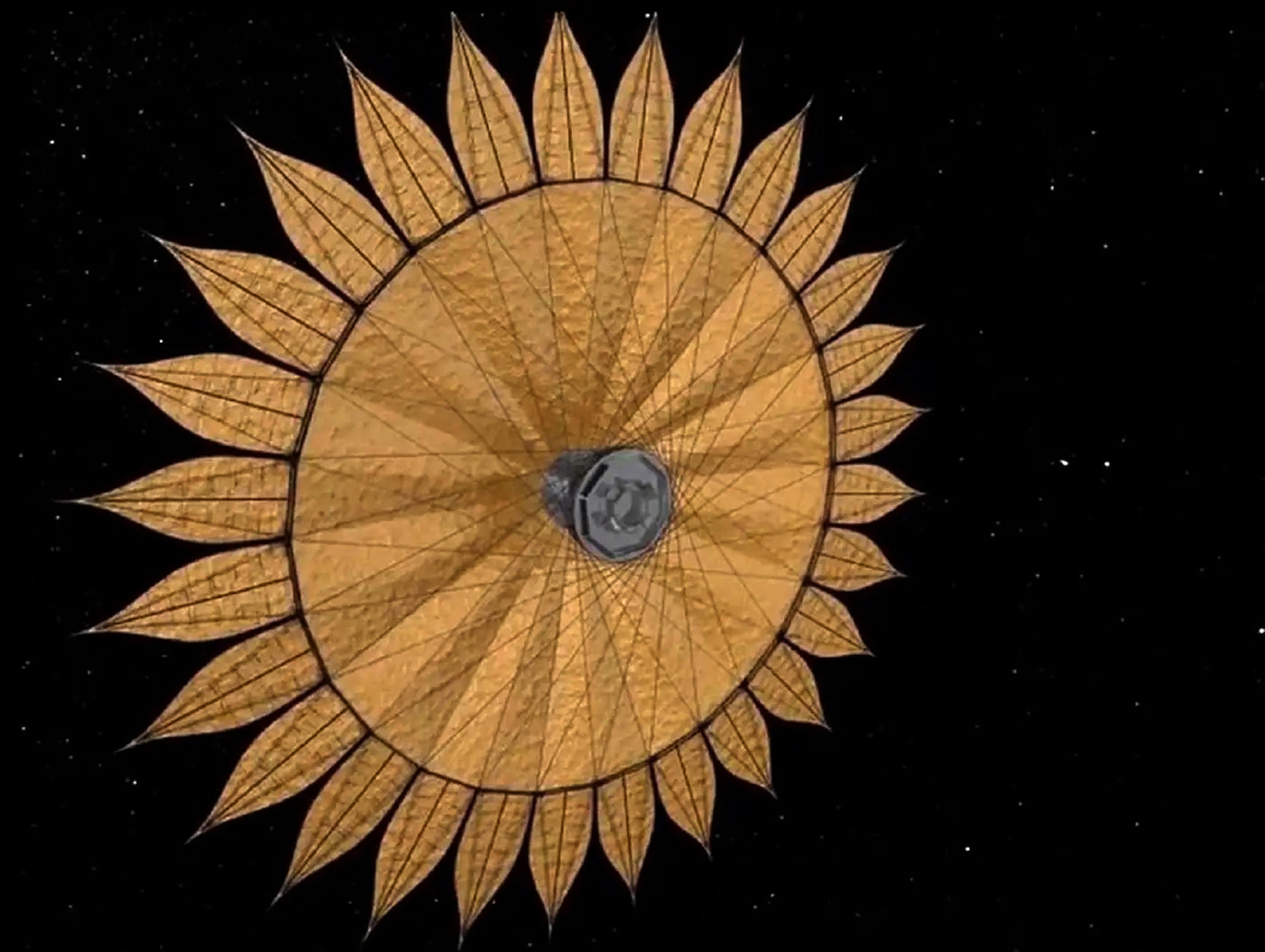Stay Up to Date
Submit your email address to receive the latest industry and Aerospace America news.
John C. Mather, astrophysicist and Nobel laureate
When John Mather stepped down as top scientist for NASA’s James Webb Space Telescope in June, one might have assumed it was to enjoy a well-deserved retirement. The agency that month celebrated one year of observations with Webb, whose development Mather oversaw for nearly 30 years at Goddard Space Flight Center in Maryland. It wasn’t always smooth going: Originally slated to be launched in 2010 at a cost of just under a billion dollars, Webb’s projected cost rose to $9.7 billion by the time of its launch on Christmas Day 2021, including the first five years of operations. Mather has no regrets. Not only was the extra cost and development time “absolutely worth it,” he says, he will spend the next phase of his career conceiving of future, cutting-edge telescope designs with which NASA might plumb the other secrets of the universe. I visited him outside Washington, D.C., to discuss some of these ideas and the projects that have defined his career. Here is our conversation, compressed and lightly edited for clarity.
Q: How did growing up in rural New Jersey with parents who had science and teaching backgrounds shape you?
A: I grew up on a research farm of Rutgers University, a mile from the Appalachian Trail. There wasn’t much to do except think and play with science toys.
The research farm he refers to was a plot of land owned by Rutgers as part of its Agricultural Experiment Station. Mather’s father, an agricultural science statistics professor, conducted studies about milk production and other aspects of the dairy industry. — JC
I read Scientific American about projects you could do. I grew up thinking that the great adventure of science was to think of a way to measure something or build some equipment that could measure something. Now, looking back on it, I call myself a theoretical instrument builder.
Q: A couple years into studying physics in grad school, you switched focus. How did you choose a new subject?
A: I got kind of tired of thinking; I needed to be more social. I needed to be in a laboratory building something with my hands with people, because it is lonely just sitting in a library writing into the night. So when it was time to look for a thesis project, I ran around and talked to faculty. Paul Richards, Charles Townes and Michael Werner were looking to measure the cosmic microwave background radiation. The cosmic background had just been discovered in 1965, and this was 1970. It’s the beginning of the subject: Only a few measurements had ever been done. So I joined their group, and my thesis project was an attempt to measure the cosmic background radiation spectrum with a balloon-borne payload that my thesis adviser had conceived. I and two other graduate students and some engineers in the faculty built this apparatus, and we took it to Texas and launched it. It didn’t work properly, so we didn’t get to write a thesis about a working project, but it was clearly a breakthrough concept.
Q: That led to a job offer at NASA. How did you go from a postdoc to the chief scientist for the Cosmic Background Explorer satellite?
A: At the Goddard Institute for Space Studies, I was happy to get to work with Patrick Thaddeus, a quite famous molecular radio astronomer but also quite familiar with cosmic background radiation studies. In 1974, NASA put out a call for proposals asking for new satellite mission ideas. I said, “Hey boss, my thesis project failed. We should try it in space.” You could measure the spectrum of the radiation much better because we could have a perfect calibrator — a blackbody object — that would radiate exactly the same way the cosmos is supposed to radiate. This was something you could never do with a balloon-borne payload. We were also after the map of the anisotropy, the hot and cold spots. If you could measure that from space, you could do it without interference from the atmosphere and get the entire sky. Then we said, “We should also add an experiment to measure the infrared from the most distant galaxies, because we don’t know how bright they are.” I thought our proposal would never go anywhere, but a few months later, NASA gave us some money to study this. The idea was to make a small spectrometer that would fit in the top of the IRAS [Infrared Astronomical Survey] satellite. After a while, it was clear that wasn’t a good fit, but we thought maybe NASA would really be interested in the whole mission that we’d proposed. So in 1976, I came to Goddard Space Flight Center with a hope that the project would actually go. Since it was sort of my idea, people said, “OK, run with it.” I spent every day talking to engineers and thinking, “How can we possibly do this?” We were pushing far beyond the state of the art. For the cryogenic instruments, we had to learn how to build equipment that would work at a temperature of 1.4 Kelvin, surrounded by liquid helium in its own tank. Everything changes when it gets cold: Metals change a little bit; some of them disintegrate. You cannot lubricate with oil because it will become solid, and controlling the temperature of something is very tricky in a vacuum. Electronic parts do not work. You have to invent detectors that have to be the very best. We got lucky because the Hubble telescope was behind schedule and over budget. NASA headquarters said, “We’re going to slow down COBE. What would you do if you have longer time?” We found new technology: more sensitive microwave radiometers.
Two concepts were key for COBE: For the spectrometer experiment, we must have a calibrator that simulates the sky as the universe would have done it. It’s called a blackbody and is shaped like a trumpet mute. You move it into the antenna to substitute for the incoming sky radiation. If they match, then you have confirmed the expanding universe story. You had to be in space to do that. Second, for the radiometers to measure the microwave hot and cold spots, we do it with a differential device. A single receiver has two antennas and a little switch that goes back and forth a hundred times a second. The upshot is there’s a signal at 100 hertz, which represents the difference in brightness between the two antennas. We’re going to spin the spacecraft in all possible orientations and end up with a list of hundreds of millions of measurements of differences of brightness between two spots on the sky. A computer program reassembles a map of the sky based on hundreds of millions of differences. It’s easy to explain, hard to implement.
Q: How did COBE shape later projects you worked on, like Webb?
A: Goddard learned how to do big projects, but also how hard it was. For instance, almost every cold test of a part for COBE had to be done over. We learned how tedious it is because you can only do these cold tests inside giant vacuum tanks, which have their own procedures and cycle time. It might take you months to repeat a test that has failed, so I have to plan for that. We learn how to do it at the technical basis. We developed our knowledge base and also developed the people. So when we got the chance to work on other missions that required low temperatures, we say, “That’s hard, but we’re not intimidated.”
Q: It’s not impossible any longer.
A: That’s a phrase I often say nowadays: “It’s not impossible.” That’s my job, to pursue what is not impossible.
Q: When you began Webb in 1995, how would you have responded if you knew it wouldn’t launch until 2021 and cost not $800 million but nearly $10 billion?
A: I would have said it’s absolutely worth it. There’s no other way to get this information. If you want to know how those galaxies grew, you have to build this equipment. NASA Administrator Dan Goldin was a reason we were able to pursue the segmented telescope design. He knew it was possible to have a telescope with a bigger diameter than your rocket fairing because he’d been working on those things for TRW in the black [classified] area. They knew they needed them — and not for astronomy. Although astronomers might wish to think that we are pure of heart, we are using the equipment we couldn’t have if not for the military. So when Goldin urged us to find a way to do something “faster, better and cheaper,” we worked on it. The upshot from my perspective was that we would need organizations that combined all of the parts in one place as much as possible to streamline the activities. In actuality, you can’t accomplish that, so we negotiated contributions from Europe and Canada and the United States. Coordinating all that is a massive challenge, but you can’t streamline something that’s got so many moving parts. Also, you can’t easily say, “That’s too hard, let’s cut back.” If you want something faster, it’s not going to be as good. And with a project of this scale, it’s very difficult to make changes without affecting the science objectives. You cannot. You’re going to need four wheels on your car. You cannot just say, “We’ll skip that.”
Q: If you really want to do major science, you need to take that big step.
A: Clearly, if we had started off from the beginning to build a 4-meter-diameter telescope that could have fit inside a rocket without unfolding the telescope itself, we would have aimed at that, and it would have been cheaper.
Mather is referring to the original proposal for what became the Webb telescope, published by astronomers in the 1995 report “HST and Beyond.” — JC
The instrument package might have still cost several billion dollars. It wouldn’t have suddenly become an easy project; it would have just become a weaker project. So in the end, I think we decided well to do what we did. One of the big discussions early on was the wavelength range Webb should cover, and that was challenging because we weren’t sure what this telescope was going to see when it peered back toward the cosmic dawn. One point of view said, “We know the early universe doesn’t have any dust in it, so you don’t need the cryogenic detectors to see the early universe.” Other people said, “Well, actually you don’t know that. Maybe the early universe is dusty.” And sure enough, Webb has found that it’s pretty dusty. You need what we now call the mid-infrared channels from 5 to 28 microns to tell what are those little fuzzy dots going and doing. So we started 25 years ago designing something that would be launched far in the future, and now we have a predicted life of something like 25 years. Are you planning for 50 years of operation when you know what you’re going to look for? Maybe not. Maybe it’s better to have a general-purpose toolkit. That is what we have: a general-purpose collection of instruments that can basically take images and spectra from 0.6 microns up to 28. It’s ready for anything. We didn’t include things we thought you could possibly do from the ground or were just too hard. That has to be put off to another generation.
Q: What was too hard?
A: When we started designing Webb, planets had just been detected around other stars. We certainly want to see them, but we did not have and still do not have the coronagraphic technology ready so you could see an Earthlike planet around a star like the sun. We said, “We’ll do a best effort, an elementary version and hope for the best.” We do see some planets with Webb, but only big, bright ones. We are doing transit spectroscopy — that is, waiting for the moment when a planet goes in front of its star and blocks the starlight. If the planet has an atmosphere, then some starlight goes through the atmosphere of the planet on its way to the telescope, and we look for that part. There’s not very much of a signal there, but there’s some. I think we had about 60 planets to examine during Webb’s first year of operation. The big bright ones do have atmospheres, and you can tell what’s in them. We’re still working on the coronagraph technology, and there’s an immense payoff for getting it right. We have no idea whether our solar system history is representative or unique. The current thinking is that solar systems like ours are unusual. Most stars have small planets. That doesn’t tell us what we need.
Q: We’re living by Enrico Fermi’s paradox.
A: I don’t actually think it’s a paradox. If they’re out there, why aren’t they here? And I think the answer is pretty simple: It’s too damn far, and there is no such thing as warp drive. Therefore, they’re not here. Even if they want to be here, they can’t be here.
Q: So you’re not a member of the UFO fan clubs and secret government cover-ups?
A: Being a member of the government, I can’t imagine keeping a secret that big that long. That’s not our job to keep secrets. Our job is to find things and publish them. That’s my perspective anyway.
Q: Switching gears, your projects have been the subjects of multiple independent review boards that often made blunt assessments. In hindsight, were those valuable?
A: They’re a kind of reality check. It’s good to have them, even if they’re unpleasant for the participants. The people sending the money need to know they can trust us, and the people doing the project need to know we didn’t make any mistakes that are big. It’s quite unusual for a panel to discover something not already known to the participants, but once in a while, you need the review panel to explain this to the boss. It’s a way of insulating against the mentality, “Well, why don’t you just try it? It might work.” My history with projects is if you do not test it, it will not work. It’s not a matter of chance. One of the interesting questions, though, is “How much testing is enough?” There are few things where you cannot test them the way that they’re going to be operated. But you can’t do everything; you can’t do zero-gravity here [on Earth]. That’s a good time to get your experts together and have them imagine all the things that could go wrong. It leads to our discussion of risk management. If we didn’t have a formal risk management process, it would be hopeless because my fellow human beings and me especially are pretty ready to take a chance when we shouldn’t be. When you’re building a space mission and spending the public money, it’s not just risk to yourself. It’s a matter of risk to a whole agency or a whole nation or a whole future of science. So we have to go have a discussion and make sure that we fully understand all of those risks and what we might do to ameliorate them.
Q: How can future missions balance generating wild ideas that do important science while not exceeding budgets and timelines?
A: Picture a sort of idea factory with tens or hundreds of brilliant things coming up, people working on them, and gradually the ideas get more mature until you can tell which one might win. Sometimes it’s a formal process where you ask prospective contractors to tell you how they would do it, and you select the best one. As to how we decide which wild ideas get picked, it’s not exactly a democratic process, but it’s not “We did this because the old guy wanted us to.” It’s “We did it because the community put in their best effort to write good proposals, and they were evaluated carefully and fairly.” We always are cranky when we lose, and most of us lose most of the time. But once in a while we win, and it’s worth it because the whole community of science and the whole world gets to see what we do.
Q: For big projects like Webb, NASA relies heavily on Decadal Surveys to recommend the top priority at a given time. Does this approach still work, even when the big flagships take more than 10 years to develop?
A: The decadal has demonstrated its value very well. The virtue of having a giant National Academies report is it shows the people that have money we know what we need to do. If you’re a legislator on Capitol Hill, you do not want seven different astronomy projects saying, “Me, me, me.” It’s one of the ways astronomy has made so much progress, not only for space stuff, but on the ground as well. Ten years seems to be about a right cadence to me, even though big projects like giant telescopes take more than 10 years to build — some of them 20 to 30 years.
Q: Now that you’ve stepped back from Webb’s day-to-day operations, tell me what you’ll be working on.
A: I’m working on hybrid observatories, which combine something like a telescope on the ground with something orbiting in space. I started with a 2018 idea I had for an orbiting starshade that cast a shadow of a star onto a telescope on the ground. We are getting a 39-meter-diameter ground telescope in Chile built by Europe.
He’s referring to the Extremely Large Telescope under construction at the European Southern Observatory on top of the Cerro Armazones mountain. — JC
If you could get a starshade to work with it, you could get a snapshot of a solar system in a minute. It has not yet gotten far beyond the “it’s not impossible” stage, but I’m still working on it with NASA. We have some ideas to make it much lighter and cheaper, which would be essential. Then, we spun off the orbiting guide star, which would enable adaptive optics for telescopes on the ground to get images as sharp as in space. That’s the ORCAS concept, proposed in 2019 that had as part of it a calibrator body.
Short for Orbiting Configurable Artificial Star, the ORCAS concept was submitted by Mather and colleagues for consideration in the 2020 astronomy and astrophysics decadal. The National Academies did not select it as a priority for development in the 2020s. — JC
We spun that calibrator off as a separate idea and got some support from NASA to build a standard light bulb for measuring how bright the stars really are. Another idea is extending the Event Horizon Telescope and measuring the spin of black holes, which you can do if you get an orbiting antenna to work with the EHT. They’re all pretty cool ideas.
The Event Horizon Telescope is an array of eight radio telescopes located around the world to study black holes and other astronomical phenomena. Linked together to create an Earth-sized interferometer, EHT began operations in 2009, and in 2019, EHT researchers published the first picture of a black hole. — JC
Q: On a personal note: As a lifelong scientist, what are your thoughts on the future of education?
A: People want to know what to teach the kids and how to teach the kids. Clearly, it’s a major challenge for us to get good science in front of the kids. I worked on a National Academies committee to outline “A Framework for K-12 Science Education,” which was published in 2012. The report did a couple of interesting things. It said, “Evolution should be taught as science. Climate change should be taught as science.” I wanted to make sure that we say, “And you can do something about it.” They also included for the first time engineering as something that students should learn, so people who like to build things also get some attention in school. Although I love pure science, maybe many or most people will not. But being able to say you can build something, that’s much more tangible. I want kids to be curious. So please, let us have students learn from touch, learn from coaching, learn from doing. Let’s play these as sports, as they are really team sports. The fact that we now include something about engineering and constructing things is a reminder that it’s not always about the principles of things. Engineers and scientists are building things that are going to solve problems.
About Jonathan Coopersmith
Jonathan is an historian of technology and former professor at Texas A&M University in College Station who has written about the failures of 20th century space commercialization. He has a doctorate in history from the University of Oxford.
Related Posts
Stay Up to Date
Submit your email address to receive the latest industry and Aerospace America news.







